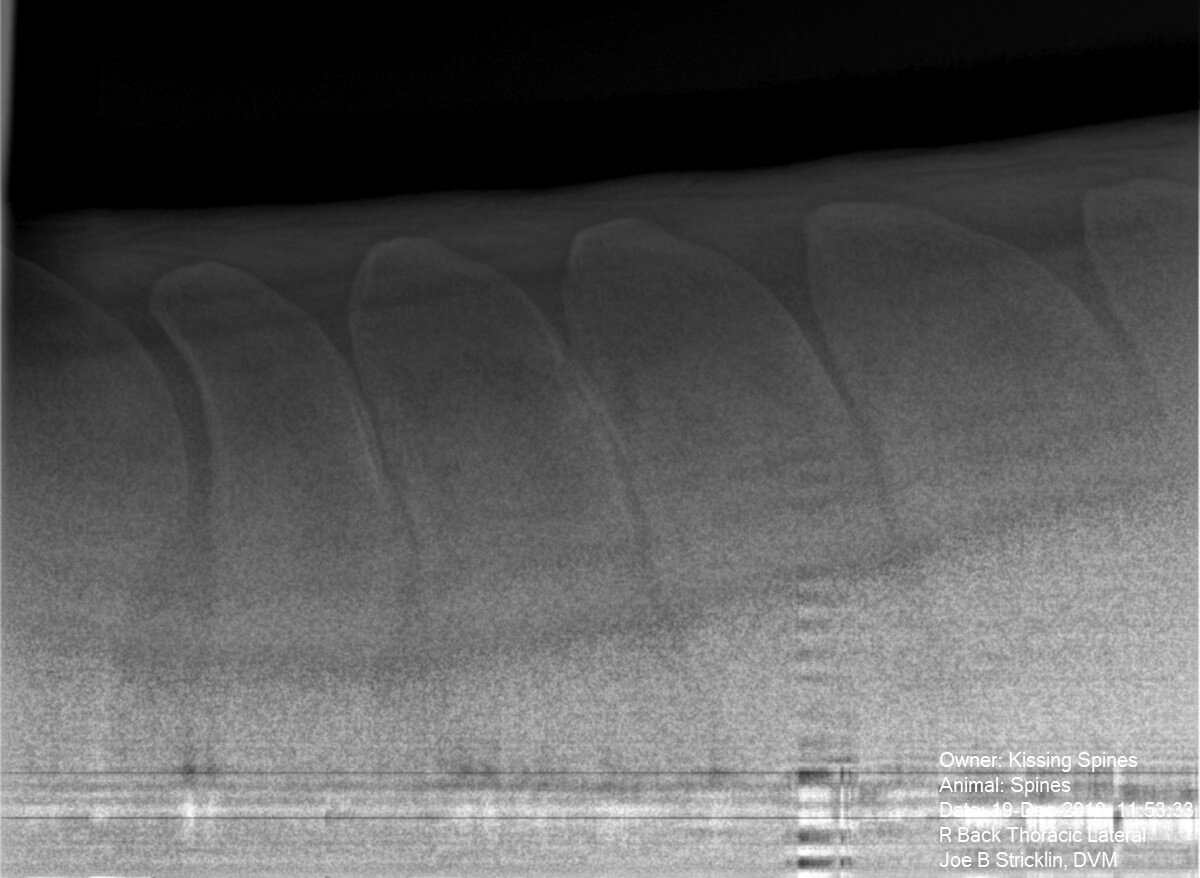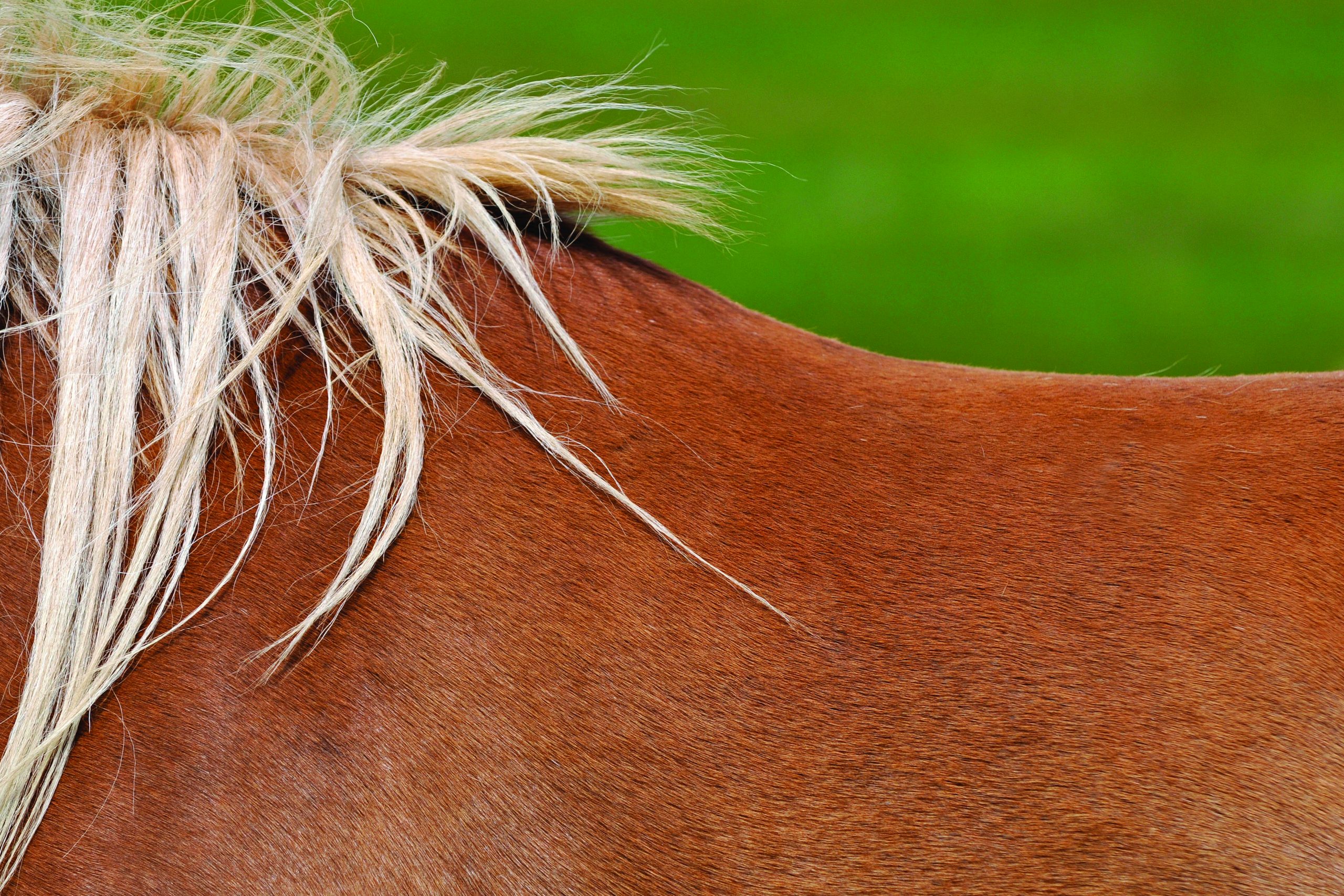Every decade has its disease, and kissing spine is clearly in the running for the 20-teens and 2020s.
Your roping buddies might tell tales of purchases gone wrong or steady performers dropping out of the arena. One guy had surgery done on his gelding’s back before it even started having problems, while another woman had to retire her best mare when she suddenly started refusing to go in the box and bucking in the field. Everyone has an opinion or a tale to tell. It sounds absolutely terrifying and, frankly, you’re scared. Is your horse likely to fall victim to this terrible problem? Stories about conditions that impact your horse’s health get told and repeated in the jackpot parking lot or the feed store counter until they become the stuff of rural legend. Kissing spine is no exception. While this condition can be troublesome, it’s really not as devastating as you’ve probably heard. Read on to learn the true story behind those widespread myths about kissing spine.

Like many health conditions, there are widespread rumors about kissing spine floating around the horse world. Let’s take a look at the truths behind those myths.
Myth #1
If your horse develops back pain or bad behavior under saddle such as bucking, kicking out or refusing to go forward, he probably has kissing spine.
The Truth: There are many conditions that can cause non-specific bad behavior, ranging from gastric ulcers to osteoarthritis. Even back pain can be the result of a wide variety of different underlying problems—including arthritis of the small joints that help stabilize the spine, soft tissue damage from an ill-fitting saddle or an unbalanced rider. Back pain is also a common secondary finding that can be due to compensation from lameness in the lower legs.
What’s most important to recognize is that any time your horse exhibits symptoms such as subtle lameness, decline in performance or bad behavior, you should request a full examination from your veterinarian before jumping to a conclusion that kissing spine is to blame.
[READ: THE VALUE AND VARYING DEGREES OF VET CHECKS]
Myth #2
It’s easy to determine when kissing spines are the cause of your horse’s bad behavior. All you have to do is see them on a radiograph.
The Truth: Kissing spines are commonly seen on radiographs of horses with no clinical signs. Surprised? It’s true. In one large-scale study, 55% of horses had radiographic evidence of kissing spine, while only 5% had thoracolumbar pain. And in early studies looking at post-mortem examinations, evidence of overriding dorsal spinous processes were reported in as many as 83% to 92% of horses.
This means it takes more than just a picture to determine whether overriding dorsal spinous processes you see on a radiograph are truly the cause of your horse’s problems. In fact, although identification of kissing spines on radiographs is easy, an accurate determination that those radiographic findings are really causing problems can be much more challenging.
If your vet identifies overriding dorsal spinous processes on a radiograph, they’re likely to suggest additional diagnostic tests such as nuclear scintigraphy or “bone scan” (your horse receives an injection into the blood stream with a radioactive substance that’s detected with a special camera in areas of active inflammation), or diagnostic blocks (a local anesthetic is injected into the area in question to see whether symptoms disappear when pain is eliminated). Thermography to detect localized areas of heat has also proved to be a useful diagnostic tool in well-trained hands. In any case, a true diagnosis of kissing spine as the underlying cause of symptoms is considered a “multimodal” diagnosis requiring more than one positive test to be confirmed. Radiographs alone are simply not enough.
[READ: Vet Trends: Arizona Travel]
Myth #3
If you see kissing spines on radiographs taken during a pre-purchase exam, you should RUN, not walk, away. That horse will never make it as a performer.
The Truth: We’ve already learned that kissing spines are commonly seen on clinically normal horses. What does that mean? Many horses can have a very successful career with a radiographic diagnosis of overriding dorsal spinous processes. In fact, a 2018 consensus statement from the European Federation of Veterinarians (FEEVA) stated that “there is no evidence of a correlation between radiographic appearance of the dorsal spinous processes of the back and future risk of disease in asymptomatic horses.” This group concluded that radiographs of the back should not be included in a standard pre-purchase protocol at all.
Does everyone agree? Not necessarily. A radiographic finding of overriding dorsal spinous processes can mean the horse would be at increased risk for back pain if lesions are severe and multiple locations are affected. However, individual, mild lesions may have no predictive value when it comes to assessing risks. If you are purchasing a horse, radiographs of the back can help guide management that might prevent problems from developing. You’d be wise to include back stretching and abdominal strengthening exercises in your training routine, and pay close attention to saddle fit when purchasing a horse with radiographic evidence of close or overriding dorsal spinous processes.
One word of caution—the appearance of the dorsal spinous processes on radiographs is heavily influenced by the angle of the image as well as the position of the horse when the radiograph was taken. It’s especially important to make sure radiographs are good quality when making purchase decisions.
Myth #4
If your horse has been diagnosed with kissing spines as an underlying cause of back pain or behavior problems, you might as well give it up. He’ll never be OK again.
The Truth: Kissing spines can actually be successfully managed in most horses with a variety of treatments. In some cases, physical therapy and appropriate exercise may be all it takes. Other treatments for the condition include acupuncture, shockwave therapy, injections of anti-inflammatories into the affected area, and a procedure known as mesotherapy, where a series of small injections into the skin along the back is believed to reduce nerve pain.
Finally, if these treatments aren’t effective and you’ve confirmed the kissing spines are really the cause of your horse’s symptoms, surgery is an option. Two types of surgery are available, including ostectomy (the top of the spinous processes is cut away) and the newer interspinous ligament desmotomy (the ligaments between the spinous processes are cut to relieve tension). Although ostectomy can be an effective treatment (one study reported 72% of horses returning to full athletic function), it is typically performed under general anesthesia, requires months of rehabilitation and has a fairly high risk of complications. Interspinous ligament desmotomy is a much less invasive procedure that can be performed standing and has a reported success rate as high as 92%, making it a promising option for severely affected horses.
[READ: Hay VS Cubes: Which Should You Choose?]
Myth #5
Surgery for kissing spines is a simple and effective treatment. If your vet sees overriding dorsal spinous processes on a radiograph, you should just do surgery right away.
The Truth: As we’ve just learned, surgery can be an effective treatment for a horse with severe kissing spine. That said, it should not be undertaken on a horse simply because overriding dorsal spinous processes have been identified on radiographs. Remember, kissing spines are a common finding on clinically normal horses. Even when they do cause pain and lead to symptoms, medical management is often successful and surgery is unnecessary. Surgical correction for kissing spine should be considered a “last resort” option that offers hope for horses severely affected with the condition if they have not responded to other treatment options.
Back Basics
Before we explore the myths, let’s take a minute to learn the basics about kissing spine, more correctly called “overriding dorsal spinous processes.” Your horse has 18 thoracic and six lumbar vertebrae that extend from his withers to his sacrum. Each of these vertebrae has a protrusion of bone at its midline that points straight up toward his back—similar to the dorsal fin of a fish. This bony protrusion is referred to as the “dorsal spinous process.” In most horses, there’s a distinct space between each of these spines. The dorsal spinous ligament runs across the top of the spines along the length of the back , and a series of smaller interspinous ligaments run between the spines to help provide stability.
Overriding dorsal spinous processes are a radiographic diagnosis made when the space between two spines is narrowed, allowing the bones to come in contact with one another. In more advanced cases, you can see degeneration of the bone where the spines have rubbed together. When this occurs, your horse can become painful and you may see symptoms such as back pain, bad behavior or simply a decline in performance. The condition is seen most commonly in the 14–16 thoracic vertebrae (which usually sit just under the back of the saddle) where the dorsal spines transition from pointing more backward to more forward, although it can also occur in other locations.











